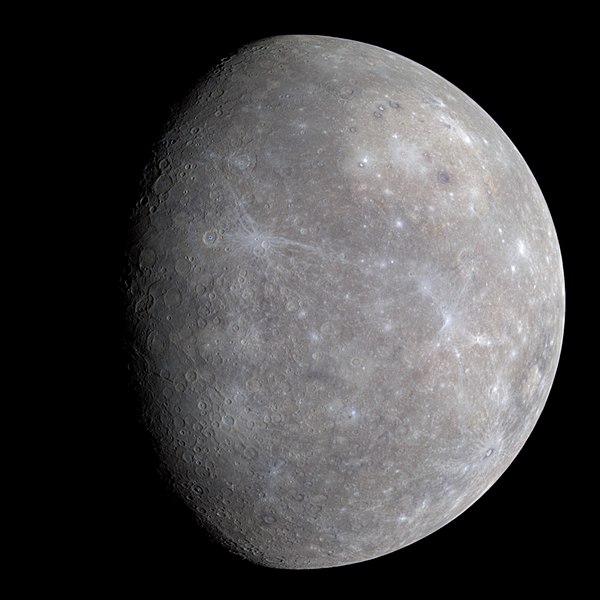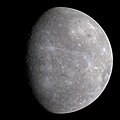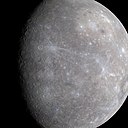Dosiero:Mercury in color - Prockter07-edit1.jpg

Grandeco de ĉi antaŭvido: 600 × 600 rastrumeroj. Aliaj distingivoj: 240 × 240 rastrumeroj | 480 × 480 rastrumeroj | 768 × 768 rastrumeroj | 1 024 × 1 024 rastrumeroj | 1 950 × 1 950 rastrumeroj.
Fonta dosiero (1 950 × 1 950 rastrumeroj, dosiera grandeco: 734 KB, MIME-tipo: image/jpeg)
Dosiera historio
Klaku daton/tempon por vidi la dosieron kia ĝi aspektis tiam.
| Dato/tempo | Bildeto | Dimensioj | Uzanto | Komento | |
|---|---|---|---|---|---|
| nuna | 15:12, 3 jun. 2008 |  | 1 950 × 1 950 (734 KB) | Jjron | {{Information |Description={{Information |Description=Full color image of from first MESSENGER flyby |Source=NASA/JPL [http://messenger.jhuapl.edu/gallery/sciencePhotos/image.php?page=1&gallery_id=2&image_id=143] |Date=2008-01-30 |Author=NASA/[ |
Dosiera uzado
La jena paĝo ligas al ĉi tiu dosiero:
Suma uzado de la dosiero
La jenaj aliaj vikioj utiligas ĉi tiun dosieron:
- Uzado en ar.wikipedia.org
- المجموعة الشمسية
- عطارد
- كوكب
- بوابة:المجموعة الشمسية
- بوابة:المجموعة الشمسية/مقالة متميزة
- ويكيبيديا:صور مختارة/الفضاء والكون/نظرة إلى الأعلى
- بوابة:علم الفلك/صورة مختارة
- ويكيبيديا:ترشيحات الصور المختارة/عطارد بالألوان
- ويكيبيديا:صورة اليوم المختارة/يناير 2018
- قالب:صورة اليوم المختارة/2018-01-13
- بوابة:علم الفلك/صورة مختارة/52
- بوابة:المجموعة الشمسية/مقالة متميزة/3
- ويكيبيديا:صورة اليوم المختارة/أغسطس 2021
- بوابة:كواكب
- بوابة:كواكب/كوكب مختار
- قالب:صورة اليوم المختارة/2021-08-24
- بوابة:كواكب/كوكب مختار/2
- Uzado en ary.wikipedia.org
- Uzado en arz.wikipedia.org
- Uzado en ast.wikipedia.org
- Uzado en as.wikipedia.org
- Uzado en azb.wikipedia.org
- Uzado en az.wikipedia.org
- Merkuri (planet)
- Planet
- Vikipediya:Həftənin seçilmiş məqaləsi/oktyabr 2016
- Vikipediya:Həftənin seçilmiş məqaləsi/42. Həftə 2016
- Portal:Günəş sistemi/Seçilmiş məqalə
- Portal:Günəş sistemi
- Vikipediya:Həftənin seçilmiş məqaləsi/sentyabr 2017
- Vikipediya:Həftənin seçilmiş məqaləsi/36. Həftə 2017
- Vikipediya:Həftənin seçilmiş məqaləsi/yanvar 2018
- Vikipediya:Həftənin seçilmiş məqaləsi/5. Həftə 2018
- Uzado en ba.wikipedia.org
- Uzado en bcl.wikipedia.org
- Uzado en beta.wikiversity.org
- Uzado en be.wikipedia.org
- Uzado en bh.wikipedia.org
- Uzado en ca.wikipedia.org
- Uzado en ca.wikinews.org
- Uzado en ckb.wikipedia.org
- Uzado en cr.wikipedia.org
Vidi plian ĝeneralan uzadon de ĉi tiu dosiero.




